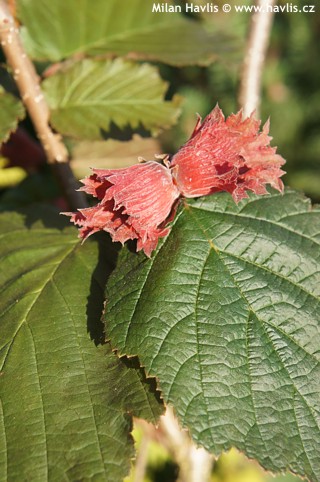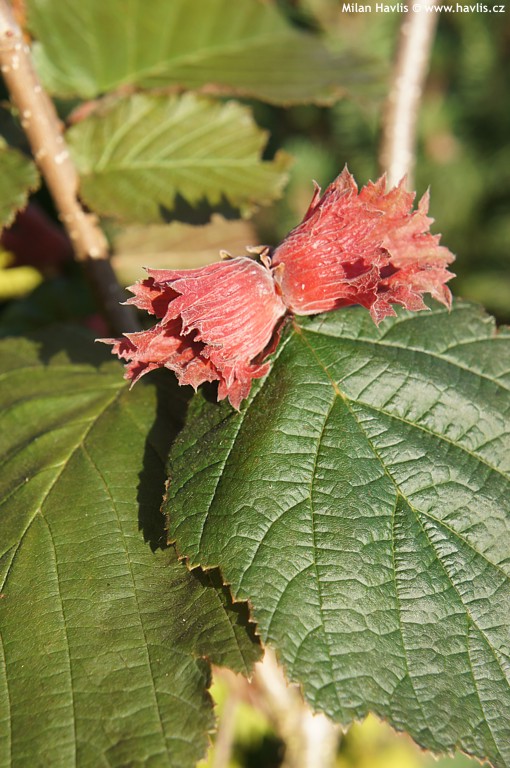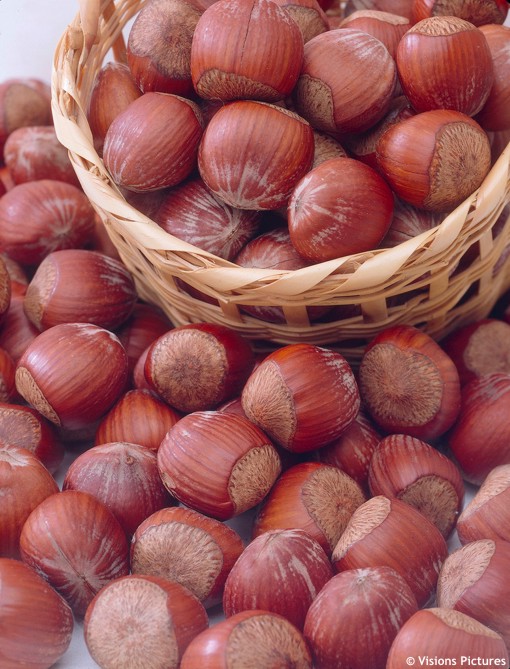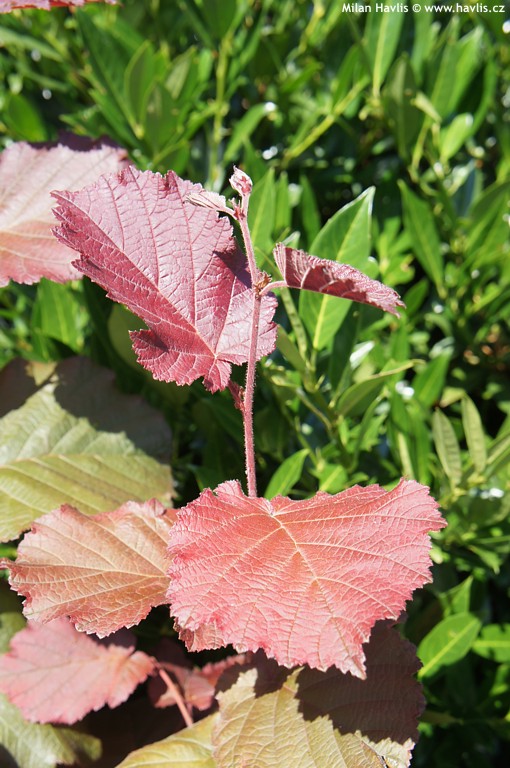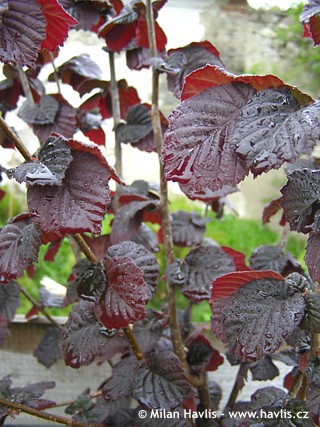Corylus 'RODE ZELLERNOOT' European hazelnut
European hazelnut is a well-known shrub of European woodlands which is popular mainly for its fruit - nuts. It is a suckering, thicket-forming shrub with numerous upright stems. As it is a dense and large shrub it is commonly used as a screening plant. It will also make a wild hedge which should be controlled if required compact. Growing two different hazelnut varieties will ensure cross pollination, higher crop and better nut quality.
Rode Zellernoot is a variety with rich burgundy red leaves which turn deep green when nature of if not fully insolated. In winter and early spring in bears plentiful of pendent, rosy red, male catkins. Leaves are broadly heart-shaped, mid green, deciduous, serrated at margins. It can be pruned almost anytime and it takes hard pruning, too. However, if you grow it for fruit, make sure not to cut them much to have some fruit later in the same season.
Hazel nuts are hidden in reddish hard shells. They contain minerals and proteins important for sportsmen, students and convalescents. 100g of fresh nuts contains 13g protein, 61g fat, 13,7g carbohydrates and 3.5g fibre. They mature in late September.
It will grow almost anywhere but will crop best in fertile, well-drained, chalky soil. Fully hardy to -34°C (USDA zone 4), some sources say it can withstand -40°C.
Last update 17-07-2013

































